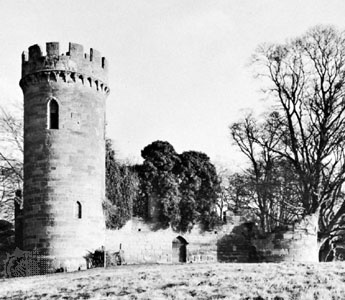folly
architecture
 (from French folie, “foolishness”), also called Eyecatcher, in architecture, a costly, generally nonfunctional building that was erected to enhance a natural landscape. Follies first gained popularity in England, and they were particularly in vogue during the 18th and early 19th centuries, when landscape design was dominated by the tenets of Romanticism (q.v.). Thus, depending on the designer's or owner's tastes, a folly might be constructed to resemble a medieval tower, a ruined castle overgrown with vines, or a crumbling Classical temple complete with fallen, eroded columns.
(from French folie, “foolishness”), also called Eyecatcher, in architecture, a costly, generally nonfunctional building that was erected to enhance a natural landscape. Follies first gained popularity in England, and they were particularly in vogue during the 18th and early 19th centuries, when landscape design was dominated by the tenets of Romanticism (q.v.). Thus, depending on the designer's or owner's tastes, a folly might be constructed to resemble a medieval tower, a ruined castle overgrown with vines, or a crumbling Classical temple complete with fallen, eroded columns.During this period in landscape design, much care was taken to emphasize the landscape's pictorial qualities, such that a distinct foreground, middle ground, and background could be perceived; to suit the general design purposes, follies were usually built on a much smaller scale than the buildings they imitated. Though follies were sometimes used as pavilions, they were typically built for visual effect alone, and, with other deliberately wrought effects—such as simulated grottoes and rocky chasms—they were intended to improve or complete the natural setting.
In the United States, the term folly has also been applied to ornate gazebos (gazebo) or garden pavilions.
- Andre, Carl
- Andre Dubus
- Andrei Liapchev
- Andreina Pagnani
- Andreini, Francesco
- Andreini, Giovambattista
- Andreini, Isabella
- Andrei Okounkov
- Andrei Romanovich Chikatilo
- Andreis, Felix de
- Andrej Hlinka
- Andre Norton
- Andreotti, Giulio
- and Reproduction Kinsey Institute for Research in Sex, Gender
- Andres Bonifacio
- Andres Serrano
- Andretti, Mario
- Andrew, Baron Lloyd-Webber of Sydmonton Lloyd Webber
- Andrew Baxter
- Andrew Bell
- Andrew Boorde
- Andrew Browne Cunningham
- Andrew Carnegie
- Andrew Dickson White
- Andrew Ducrow